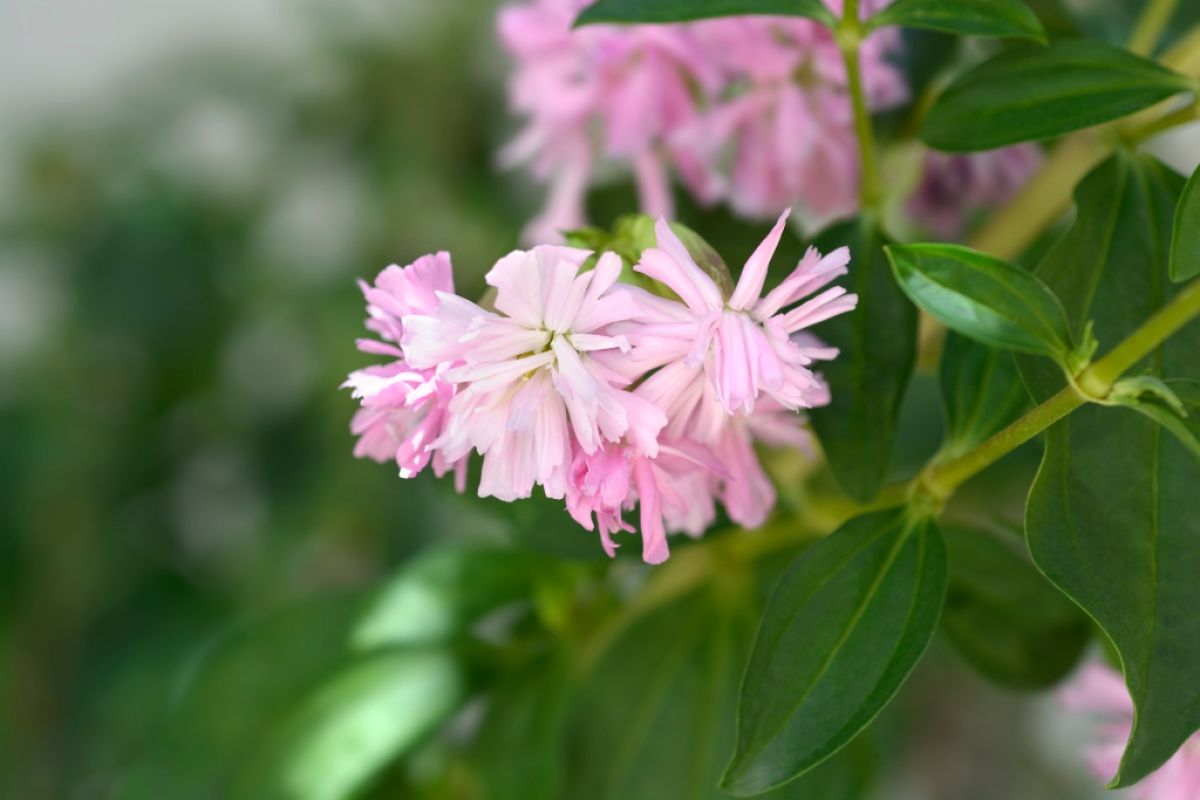Saponaria officinalis is native to Europe and Asia and has been growing in England since the Middle Ages. The name “Saponaria” is from the Latin word for soap. It was used by the ancients, who crushed the leaves and used them to scour cooking vessels.
The plant variety that produces double flowers is ‘Flora Pleno’, which is pale pink and white with a delicate scent.
Common names are soapwort and “bouncing bet.” That name may have been because the backsides of ancient washerwomen bobbed as they bent over the washing and scrubbing. The leaves of soapwort were used as a soap substitute and as a hair shampoo, as it was not as hard on the skin as lye soap. The leaves were also crushed and applied to rashes and were often used to treat poison ivy.
The soapwort plant spreads a lot, as it will grow almost anywhere and is often found along railroad tracks and even in dust heaps. In gardens, it is best confined to the outskirts not the main flower borders. My advice is that it is best grown only in pots. Gertrude Jekyll, however, used it in a bed combined with pink penstemon, blue globe thistle, and yellow hollyhocks. But remember that she had gardeners to edit and weed her garden.
This is Moya Andrews, and today we focused on Saponaria officinalis.










